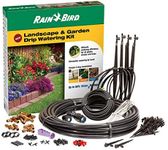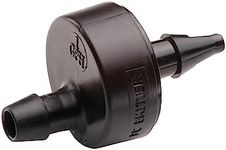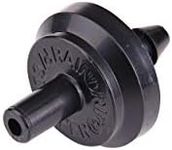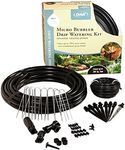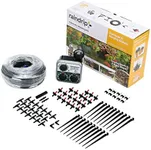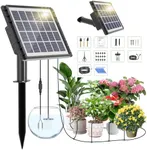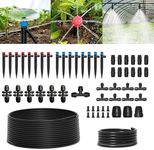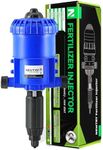Buying Guide for the Best Drip Irrigation For Hanging Baskets
Choosing the right drip irrigation system for your hanging baskets can make a significant difference in the health and growth of your plants. Drip irrigation systems deliver water directly to the roots of your plants, ensuring they get the moisture they need without wasting water. When selecting a drip irrigation system, consider the size of your baskets, the types of plants you have, and how much time you want to spend on maintenance. Here are some key specifications to consider when choosing a drip irrigation system for your hanging baskets.Water Flow RateThe water flow rate is the amount of water delivered to your plants over a specific period. This is important because different plants have different water needs. Flow rates are usually measured in gallons per hour (GPH). Low flow rates (0.5-1 GPH) are suitable for plants that require less water, while higher flow rates (2-4 GPH) are better for thirstier plants. To pick the right flow rate, consider the water needs of the plants in your hanging baskets. If you have a mix of plants, you might need a system with adjustable flow rates.
Emitter TypeEmitters are the components of the drip irrigation system that release water to your plants. There are several types of emitters, including drip emitters, micro-sprayers, and soaker hoses. Drip emitters deliver water directly to the soil, which is ideal for hanging baskets as it minimizes water loss. Micro-sprayers distribute water over a larger area, which can be useful if you have multiple plants in one basket. Soaker hoses release water along their entire length, which can be beneficial for larger baskets. Choose the emitter type based on the size and arrangement of your plants.
Tubing SizeTubing size refers to the diameter of the tubes that carry water from the main supply to the emitters. Common sizes include 1/4 inch and 1/2 inch tubing. Smaller tubing (1/4 inch) is more flexible and easier to maneuver around hanging baskets, making it a good choice for smaller setups. Larger tubing (1/2 inch) can carry more water and is better suited for larger or multiple baskets. Consider the number of baskets and the distance from your water source when choosing the tubing size.
Pressure RegulatorA pressure regulator ensures that the water pressure in your drip irrigation system remains consistent. This is important because too much pressure can cause emitters to pop off or deliver too much water, while too little pressure can result in insufficient watering. Pressure regulators are typically rated in pounds per square inch (PSI). For most drip irrigation systems, a pressure regulator with a rating of 20-30 PSI is sufficient. Choose a pressure regulator based on the water pressure in your area and the requirements of your system.
TimerA timer automates the watering schedule for your hanging baskets, ensuring they receive consistent moisture without manual intervention. Timers can be set to water at specific times of the day and for specific durations. This is particularly useful if you have a busy schedule or if you want to ensure your plants are watered while you are away. Look for a timer with easy-to-use settings and consider whether you need a basic model or one with more advanced features like multiple programs or rain delay options.
FilterA filter prevents debris and particles from clogging the emitters in your drip irrigation system. This is important for maintaining the efficiency and longevity of your system. Filters are usually installed at the beginning of the system, near the water source. Choose a filter with a mesh size appropriate for your water quality. If you have hard water or water with a lot of sediment, a finer mesh filter will be necessary to keep your system running smoothly.

